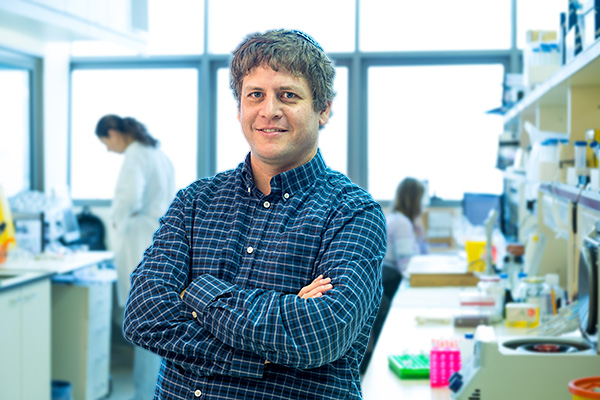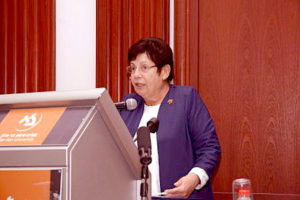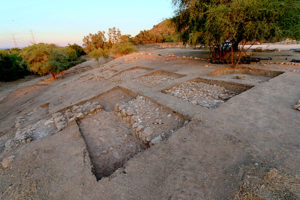A novel study conducted by BIU scientists points to an exciting new direction in cancer research.

Dr. Erez Levanon
Until very recently, the war against cancer has focused on cancerous mutations in DNA, the cell’s genetic “blueprint.” But now new research shows that RNA, DNA’s genetic envoy which is instrumental in creating proteins, might also have a key role in the development of the disease.
Research conducted by Dr. Erez Levanon of BIU’s Mina and Everard Goodman Faculty of Life Sciences and Tel Aviv University Prof. Eli Eisenberg, that was recently published in Cell Reports (at the same time that a US group published identical findings in Cancer Cell), demonstrates a connection between RNA editing (which occurs when the “message” encoded by a DNA sequence is changed without accompanying changes in the DNA itself) and cancer. “We found that in many cancerous tumors, the RNA editing mechanism simply goes wild and creates many mutations,” Levanon says.
RNA Mechanism “Goes Wild”
The action of RNA editing and creating mutations seen in cancer patients is conducted by the enzyme ADAR — which is involved in defending the body against viruses and infections. “As soon as there is an infectious path in some tumors the action of the Adar enzyme increases and causes a chain reaction that expresses itself in the many RNA mutations that we have found,” explains Levanon.
RNA has been largely ignored by cancer researchers who have concentrated on DNA in the cell nucleus. “We used the same process that’s done with DNA to locate mutations but only in RNA,” explains Levanon, adding, “We looked at the information of close to a thousand cancerous tumors and found dozens of mutations that differentiated between cancer patients and healthy individuals and between different types of cancer.”
Far Reaching Implications
Performed in the framework of BIU student’s Nurit Paz-Yaacov’s postdoctoral research, they focused on nine types of common tumors (e.g. breast cancer, lung cancer, liver cancer). “Because the Adar enzyme is in every cell, we hope in the future to be able to direct it to place where there is a mutation and to fix it or change it,” says Levanon. These new research findings are significant markers, and will undoubtedly pave a new way, say the scientists, adding that their research is only at the beginning, but its implications might be far reaching.








